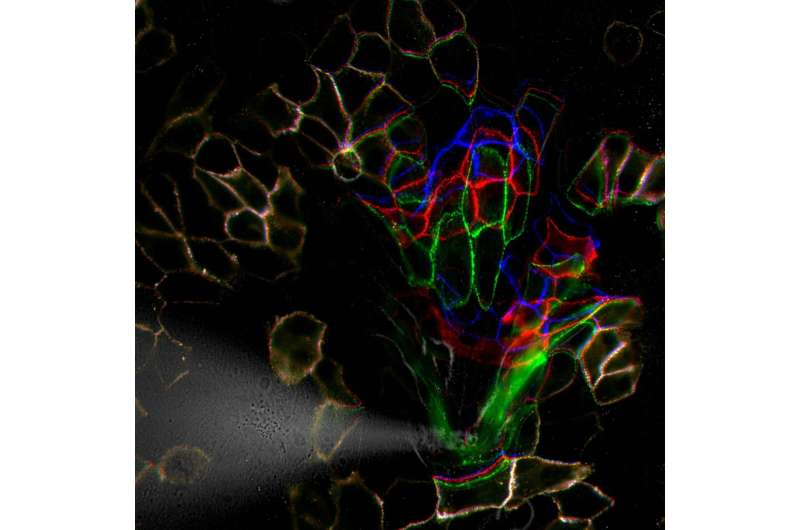How skin cells protect themselves against stress

The skin is our largest organ, and, among other things, it provides protection against mechanical impacts. To ensure this protection, skin cells have to be connected to one another especially closely. Exactly how this mechanical stability is provided at the molecular level was unclear for a long time. Researchers led by Prof. Carsten Grashoff from the Institute of Molecular Cell Biology at the University of Münster and the Max Planck Institute of Biochemistry have collaborated with colleagues at Ludwig Maximilian University of Munich and Stanford University, and now demonstrate how mechanical stress on specialized adhesion points, so-called desmosomes, is processed. They designed a mini-measuring device that can determine forces along individual components of the desmosomes. In the study, published in Nature Communications, they show how mechanical forces propagate along these structures.
Desmosomes strengthen the adhesion between cells. Patients with deficient desmosomes suffer from severe skin disorders, which arise after the exposure to mechanical stress. What was previously unclear, however, was how mechanical forces impact on the individual components of the desmosomes. The researchers have developed a method for analysing the molecular forces at these adhesion points.
"This technique functions in way that is similar to a miniature spring scale," says Anna-Lena Cost from the Max Planck Institute, who is one of the lead authors of the study. The force sensor consists of two fluorescent dyes connected with an extensible peptide. The peptide acts as a spring, which is stretched by just a few piconewtons, which in turn leads to a change in the dyes' radiance. The researchers are able to read this change with a microscope so that mechanical differences at individual binding points could be determined. In their experiments, the researchers discovered that desmosomes are not exposed to any mechanical stress as long as external forces are absent. If cells are pulled, as frequently happens in the skin, then mechanical stress becomes apparent in the desmosomes. These forms of stress depend on the force magnitude and its orientation. "When there is only a low level of mechanical stress, other structures in the cell can carry the burden. But if a high degree of stress occurs, then desmosomes come to the rescue," summarizes Anna-Lena Cost.
More information: Andrew J. Price et al, Mechanical loading of desmosomes depends on the magnitude and orientation of external stress, Nature Communications (2018). DOI: 10.1038/s41467-018-07523-0
Journal information: Nature Communications
Provided by University of Münster

















